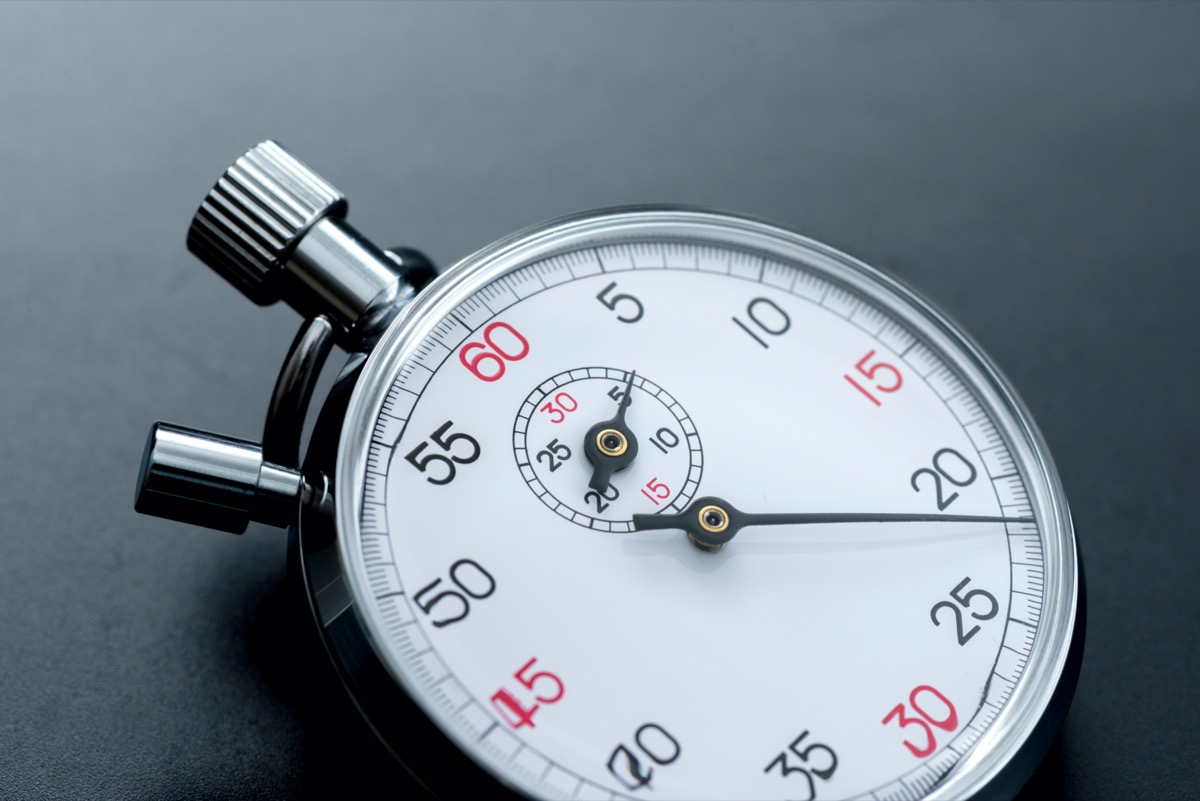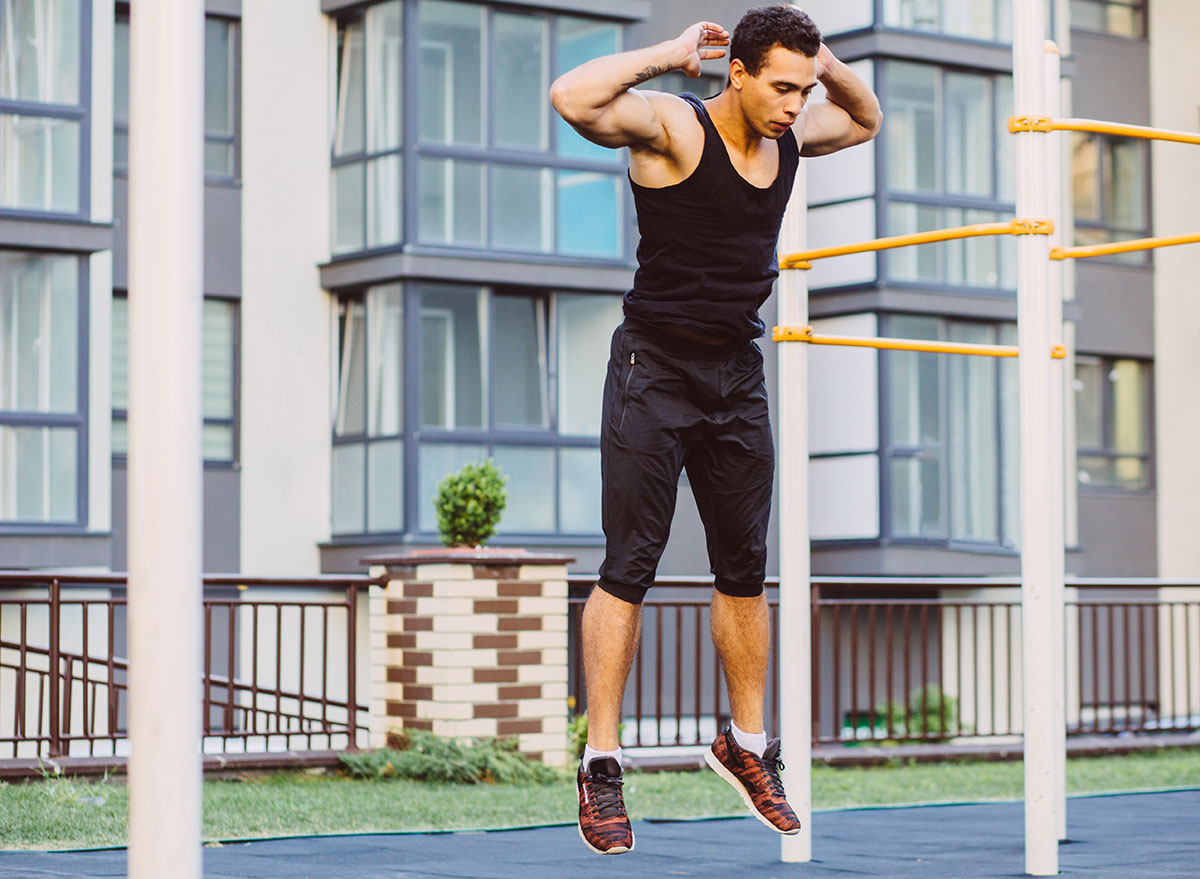The Science-Backed Way to Get Fit in Just 12 Minutes Per Week, Says Study

According to the latest guidelines from the U.S. Department of Health and Human Services, adults should aspire to perform “at least” 150 minutes to 300 minutes of moderate-intensity exercise (which includes activities such as walking) every week to enjoy the health benefits of working out. For those who prefer to push their bodies harder with more intense forms of exercise, that weekly benchmark shrinks to roughly 75 to 150 minutes per week.
However, for those who are willing to ramp up their intensity even further—and for shorter amounts of time—a new paper published in the Journal of Physiology found that “low volume” high-intensity interval training (HIIT), defined as less than 15 minutes of high-intensity exercise per session (which includes warming up and cooling down), really does work. Read on for more about this study, and for what researchers say is the least amount of exercise you need to perform each week to stay fit. And for more exercise news you can use, don’t miss the One Major Side Effect of Stretching Every Day, According to a New Study.
The Benefits Doing 12 Minutes of HIIT Per Week

Countless studies extol the benefits of interval training, or performing short bursts of rigorous, rapid-fire exercise that range from jumping rope to doing mountain climbers or burpees and performing sprints. The new paper published in the Journal of Physiology, which was conducted by researchers at The Physiological Society—a UK-based institution that coordinates exercise research across 60 countries—was inspired by a previous study published in the journal Diabetes Care.
That study, which was focused on those who suffer from type-1 diabetes, “showed that as little as 4-min of HIIT 3 times per week for 12 weeks significantly improved blood sugar levels, fat in the liver, and cardiorespiratory fitness in adults with type 2 diabetes.” What’s more, the researchers found that “these improvements were comparable to an intervention involving 45-min of moderate intensity aerobic exercise.”
That Doesn’t Include Warming Up and Cooling Down

An important caveat: Those 4-minute bouts of HIIT do not include the important warming up and cooling stages of exercise. So if you’ve got a tight schedule and are looking to squeeze in the shortest session you can, remember to block off a few more minutes for loosening up and priming your muscles for short bursts of exercise. And for more on the importance of warming up and cooling down, make sure you’re aware of the 10 Mistakes You Shouldn’t Make When You Work Out.
Why Less Exercise Is Way Better Than Too Much

According to the paper in the Journal of Physiology, which analyzed more than ten year’s worth academic research beyond studies that focused specifically on diabetics: “The findings from recent trials suggest that low‐volume HIIT can induce similar, and at times greater, improvements in cardiorespiratory fitness, glucose control, blood pressure, and cardiac function when compared to more traditional forms of aerobic exercise training including high‐volume HIIT and moderate intensity continuous training, despite requiring less time commitment and lower energy expenditure.”
In other words, there’s plenty of evidence to suggest that doing less is more. If you’re someone who prefers to train extra hard, know that a recent published in the journal Cell Metabolism found that overtraining—defined as performing HIIT for as much as 152 minutes per week—can actually harm your body. Exercisers who worked out that much over the course of a week experienced side effects that impacted their metabolisms and their bodies’ insulin resistance.
What It All Means for You

The latest research indicates that you can reap the benefits of the latest government and World Health Organization physical-activity guidelines in much shorter windows of time—in as little as 15 minutes every time you work out. And for some great exercises you can do to capitalize on this research, don’t miss The 1-Minute Workout That Builds Strength and Relieves Pain and The Incredible Four-Second Workout That Actually Works.